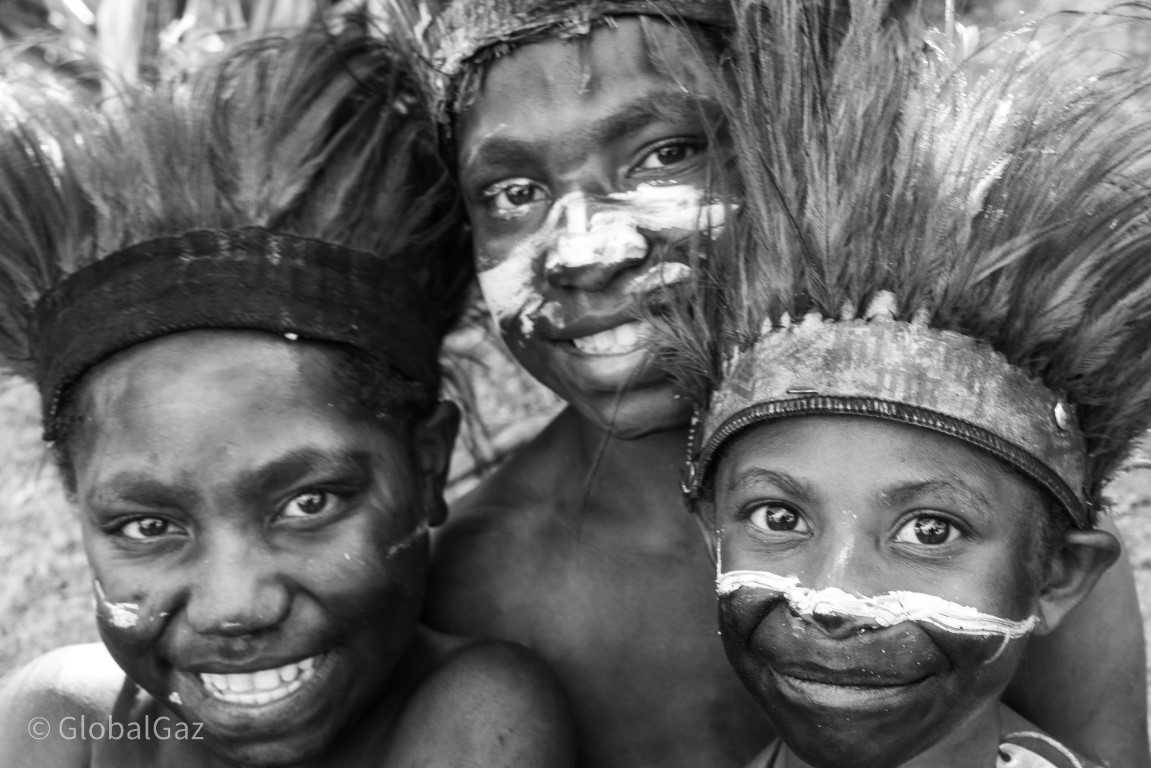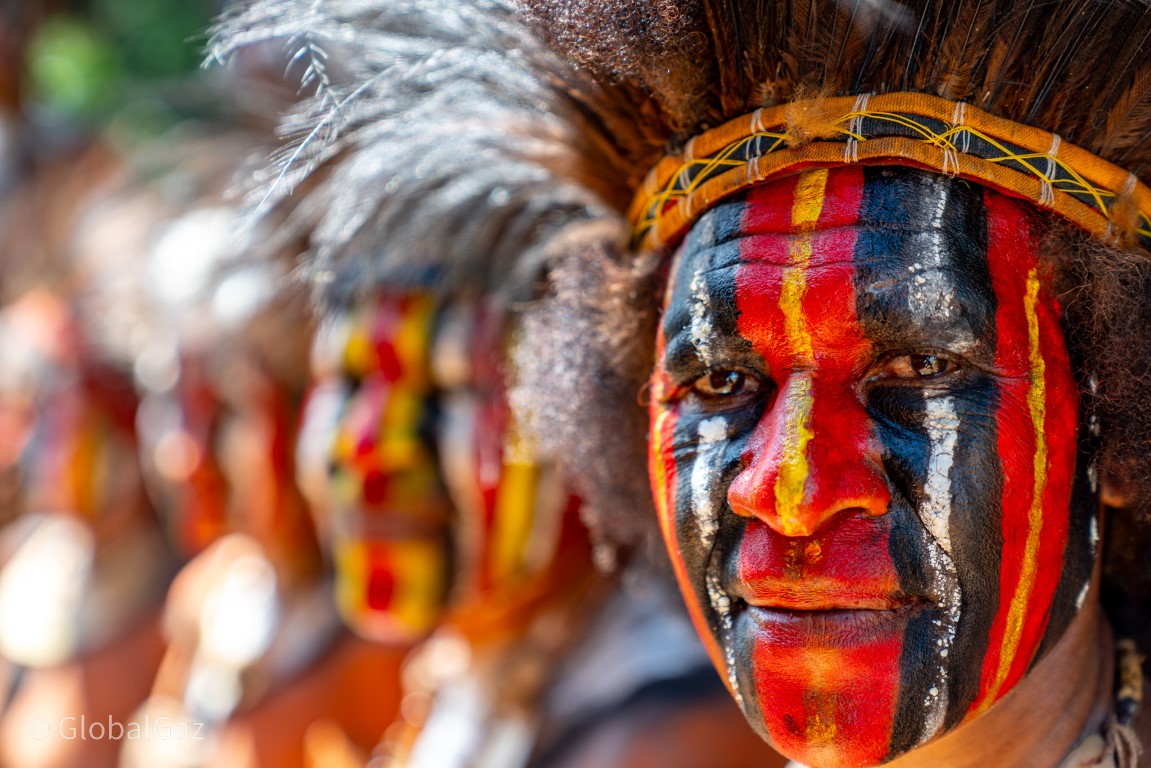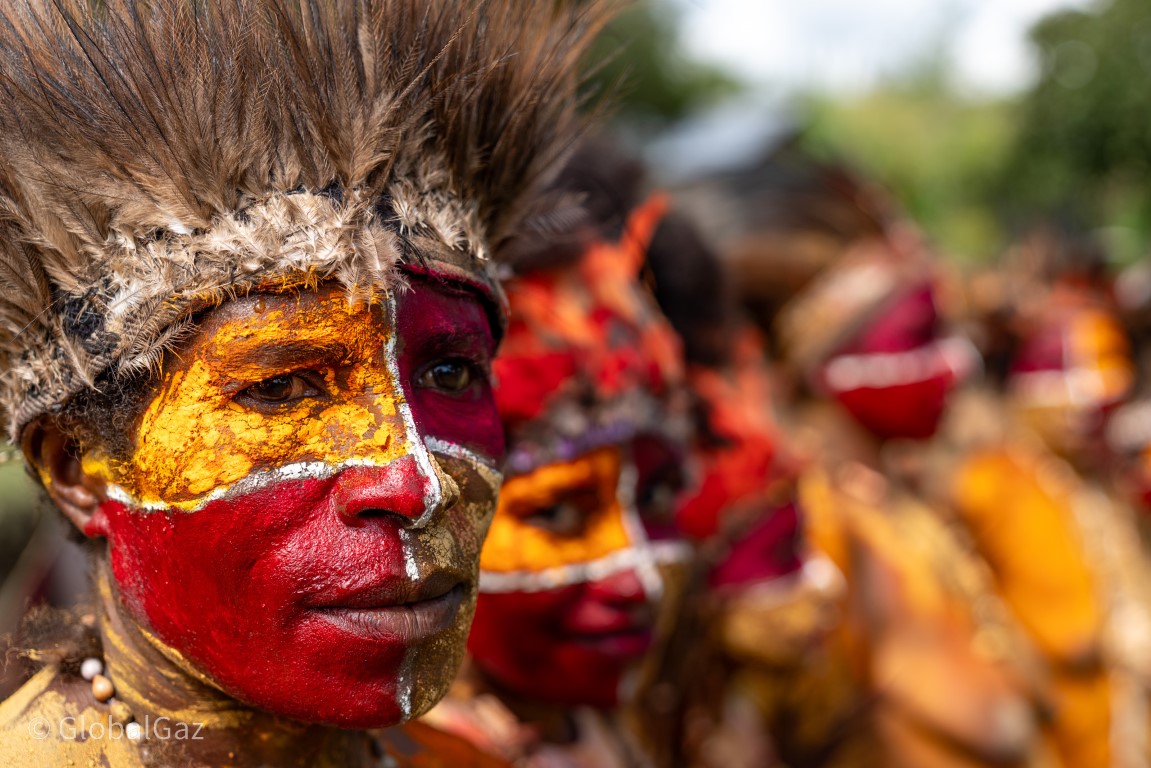Faces of Papua New Guinea. (There are affiliates in this post.) I do not like throwing around superlatives, but I feel confident to share … that this was my best tribal photographic experience. I slept next to the Mundari tribe in South Sudan and camped in Chad at the Gerewol Festival, but nothing can beat the quality and quantity of different and amazing tribes I witnessed in the Highlands of Papua New Guinea.
This country of 10 million approximately the size of Sweden is one of the most linguistically places on earth with 800 different languages. How can tribes that live so close to each other have such different customs, cultures, and languages?
I spent close to 2 weeks in the Highlands of PNG and met dozens of different tribes. Here is a look at just some of the tribes I met.

Do you want to meet these tribespeople? You can join Tribes of Papua New Guinea, who operates tours to share in these experiences. Contact me to save 10% on your tour. ric @ globalgaz.com
After travelling for so many years, there is always the risk of being a tad jaded. This trip reminded me of why I travel and that magnificent feeling of wonder and surprise.
Over this 2-week period in the Highlands I met over 50 tribes and over 500 tribesmen. It was like drinking from a firehouse. At times, tribes would parade in, one after another, I didn’t have enough time to photograph everyone. Even more shocking was this event was for six travelers including myself. This was a truly intimate experience.

Blawalka, a group known to be traditional doctors who castrate livestock. They did a live demonstation and that is when I conveniently left for a bathroom break.

This is the Kumkuipo people, the spirits who attack humans.

These are the Burning Heads, who light their headpieces on fire, and then walk around groves of banana trees at night to smoke the bats away.



These women are singing Kurai Mam are traditional love songs of the Huli people in Papua New Guinea. Women sing them to attract men for marriage, expressing love and the qualities they seek in a partner. These songs are key to Huli courtship rituals, often performed during social events where young men and women meet.

“Wido Mama” refers to traditional funeral laments in Papua New Guinea, sung to express grief and honor the deceased. Performed during funeral rites, these songs involve wailing and chanting, helping the community process sorrow while paying respects to the departed.

These people represent the traditional methods for protecting garden crops (kuai tara) include:
- Sacred Spaces: Gardens may be considered sacred, with rituals performed to protect crops.
- Totem Plants: Certain plants are grown alongside crops for their believed protective qualities.
- Traditional Beliefs and Taboos: Specific behaviors or actions might be prohibited in gardens to avoid harm to crops.
- Natural Repellents: Local plants and substances are used to deter pests.
- Physical Barriers: Natural materials like bamboo are used to create fences to protect crops.
- Community Efforts: Gardens are often managed collectively, with shared knowledge and resources.



The Virina girls.


In Papua New Guinea, Gakil moa refers to children who are orphaned or without parents. These children might face particular challenges due to the loss of parental care and support. Traditional and community-based approaches often help address their needs.

Waterfall defenders.

In Papua New Guinea, the term “Black Eyes” refers to the Koiari people, who are also known for their distinctive facial markings. The Koiari tribe is located in the Central Province of Papua New Guinea.


The Poro girls are associated with a specific cultural and social practice. The term Poro refers to the initiation and coming-of-age ceremonies for girls in various communities, particularly in the Highlands region. These ceremonies are significant in marking the transition from childhood to adulthood.

Bird spirits who protect the waterfalls.

The Asaro Mudmen are a well-known cultural group from the Asaro River region in the Eastern Highlands Province of Papua New Guinea. They are famous for their distinctive mud masks and traditional ceremonies.


Towai Rocks is a local string band.

The traditional child delivery practices can vary widely among different cultures and regions. The term Gakil kulko refers to traditional methods and customs surrounding childbirth and child-rearing.


The Nokondi boys are a part of the Nokondi culture in Papua New Guinea, which is known for its traditional practices and cultural ceremonies.


An Elemik refers to a traditional musician who plays a significant role in the cultural and ceremonial life of their community.





The term “Skeleton Tribe” often refers to the Kukukuku or Huli people from Papua New Guinea, particularly known for their distinctive traditional practices and cultural attire. The term “Skeleton Tribe” is used because of the elaborate and striking skeleton-like body paint and decorations used in their traditional ceremonies.
Everything you need to know Visiting Papua New Guinea. Read my overview.
Faces of Papua New Guinea

Photos From Chernobyl
Sign up to receive your free copy of Photos From Chernobyl. Over 100 photos from the Chernobyl Exclusion Zone.






[…] out the Faces of Papua New Guinea. Visiting Papua New […]
[…] top 20 photos of PNG or even 200. And in fact, you can check out a photo overview of some of my great photos from PNG. I spent time in the Highlands which is populated by so many unique […]